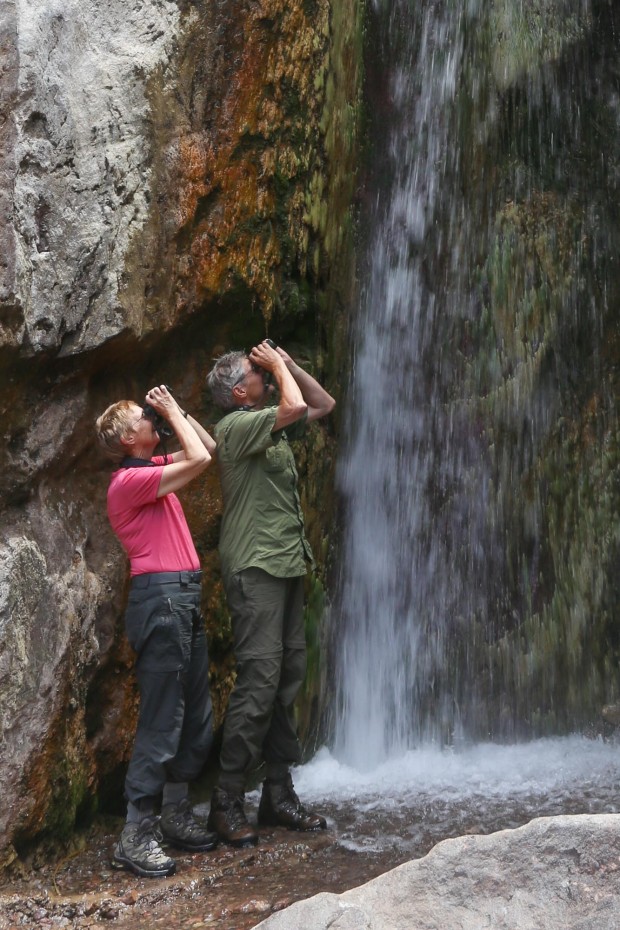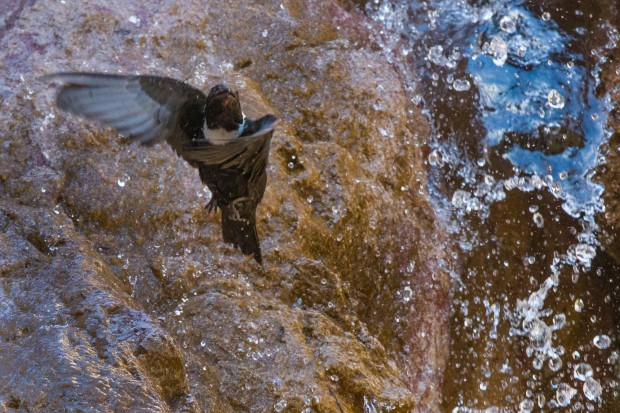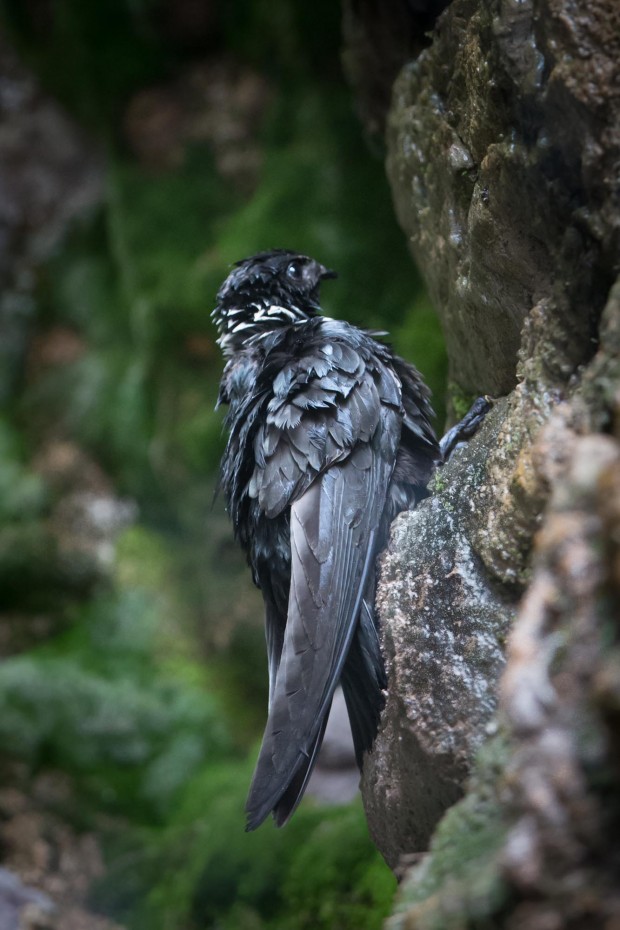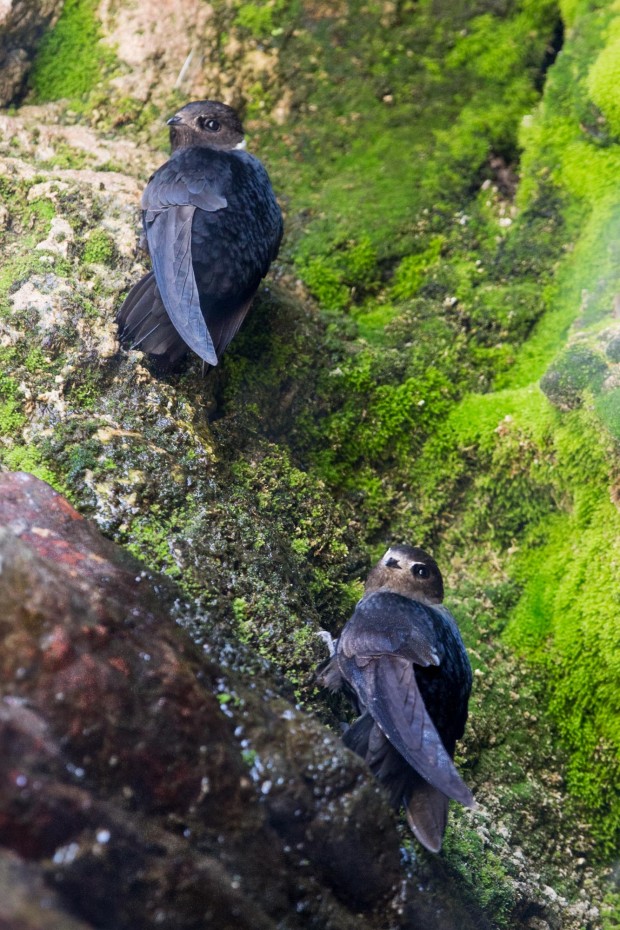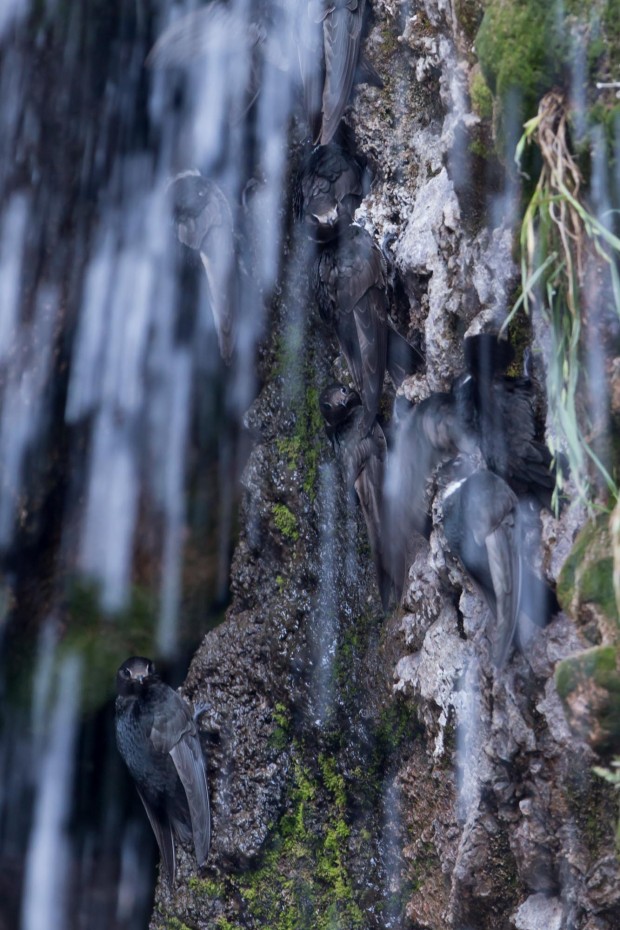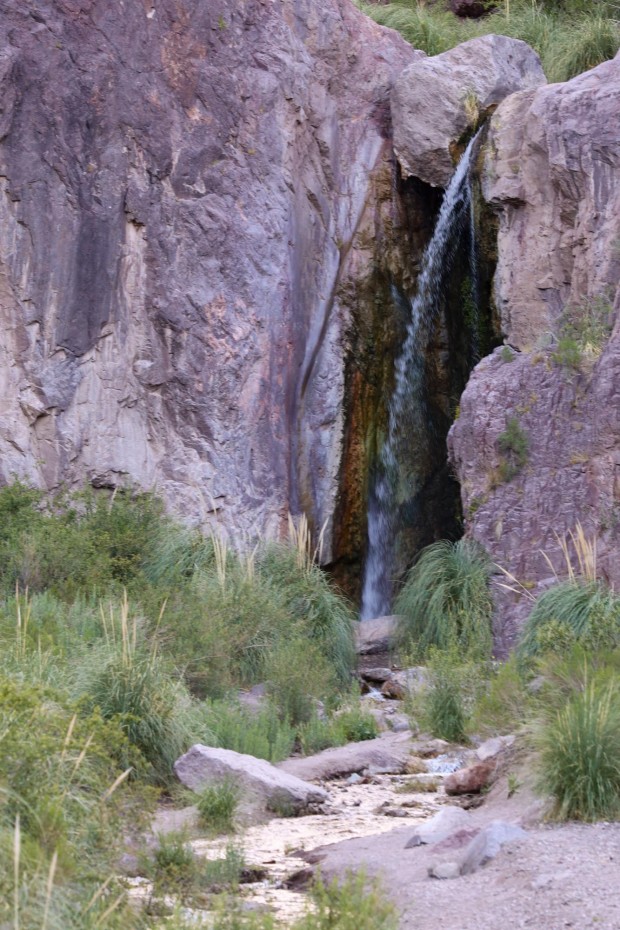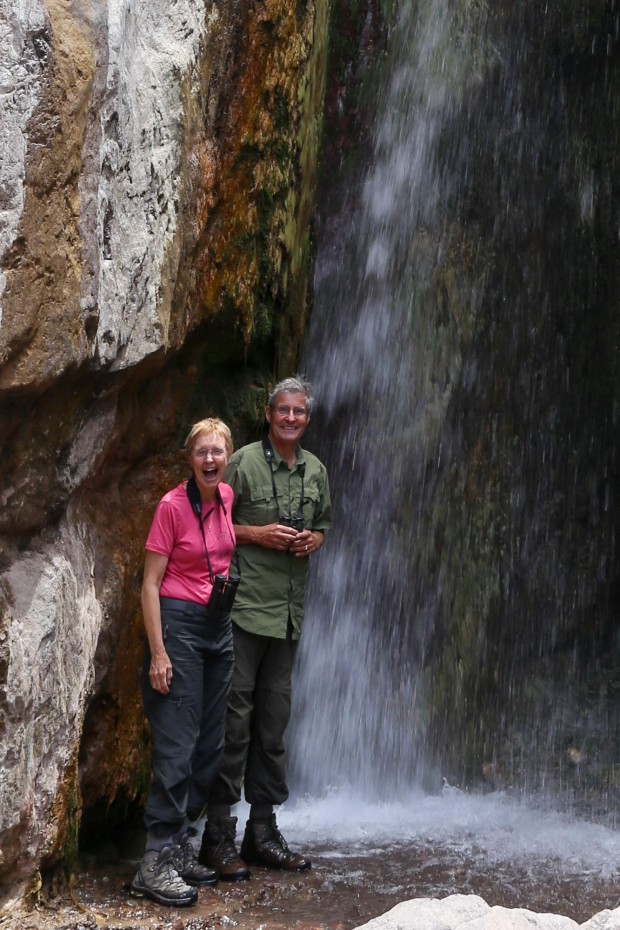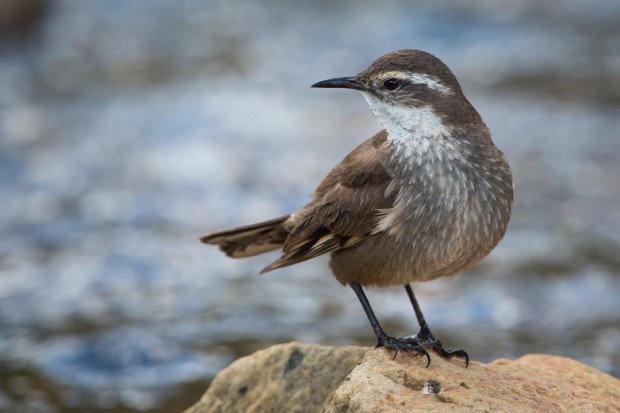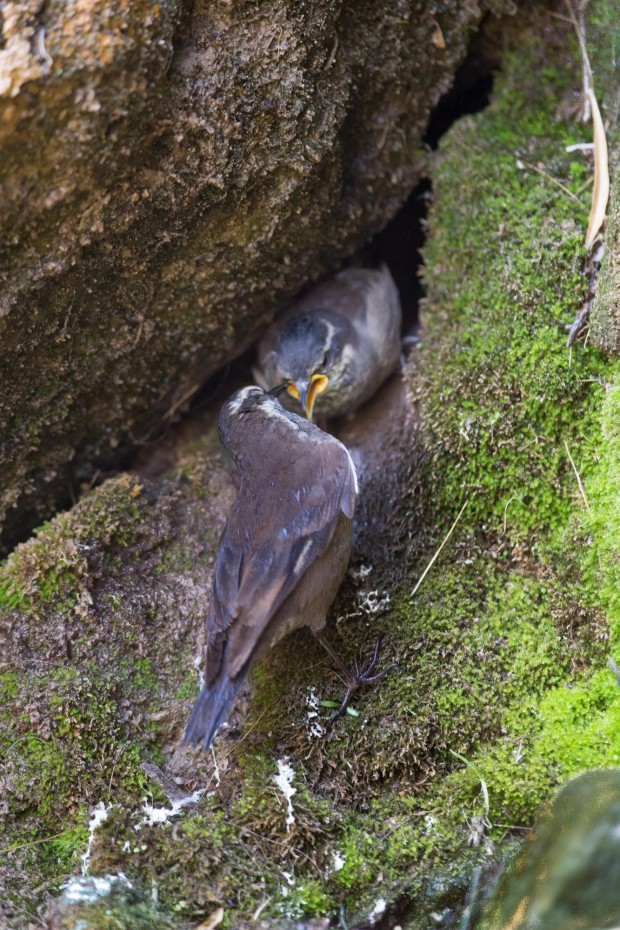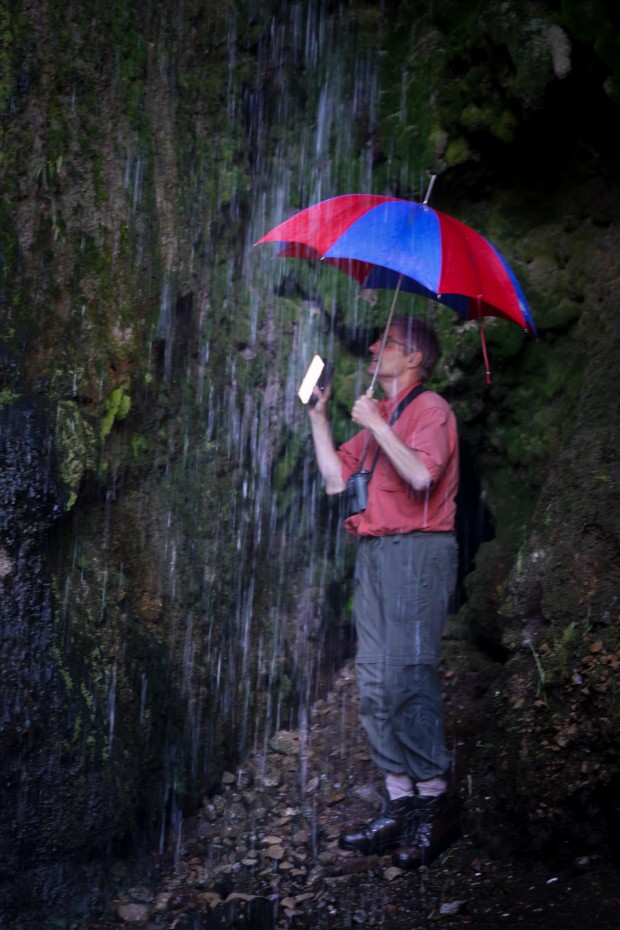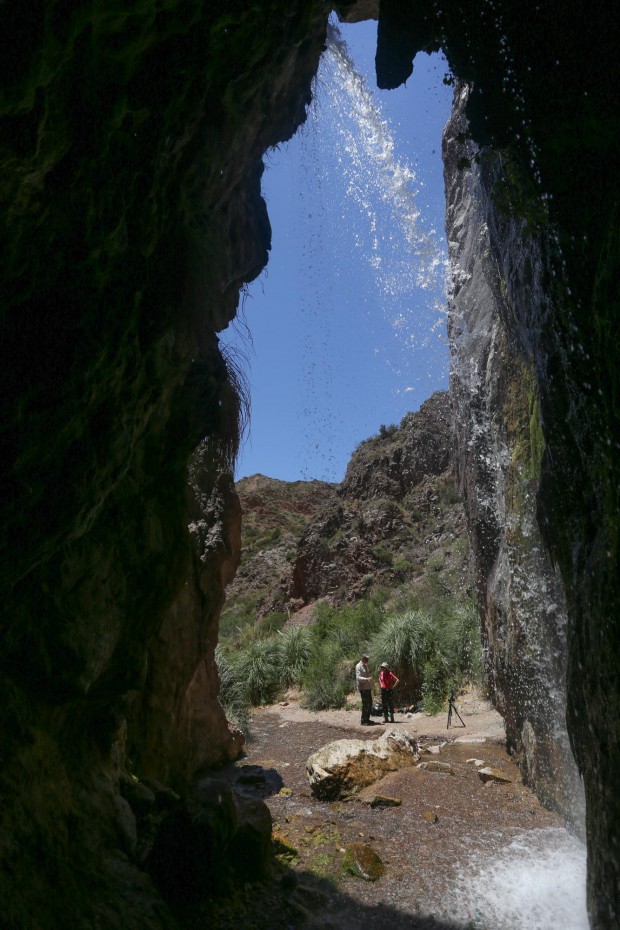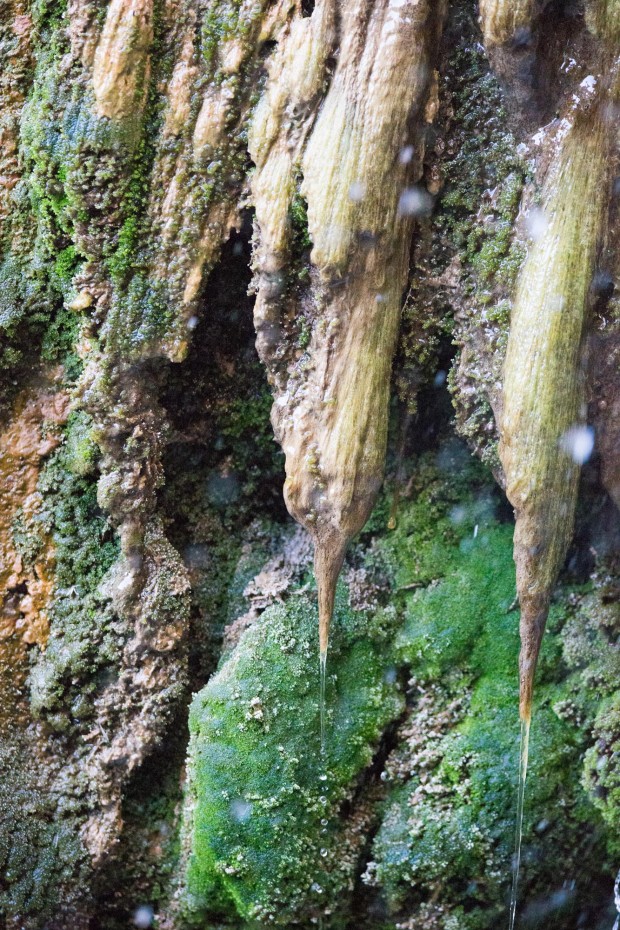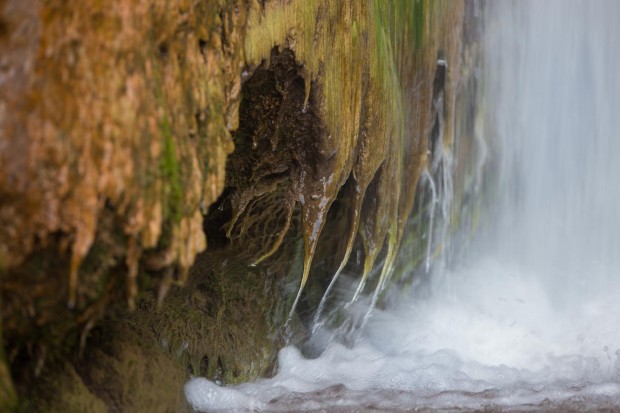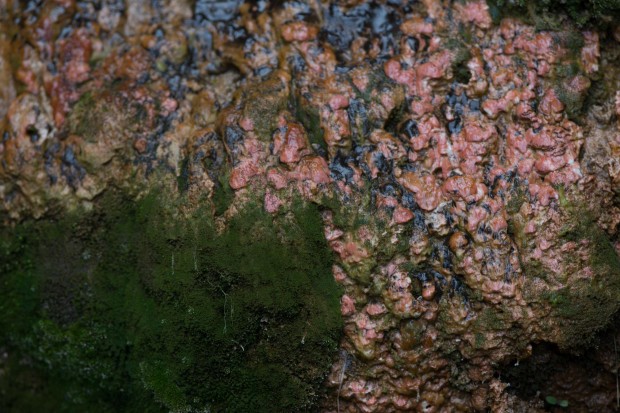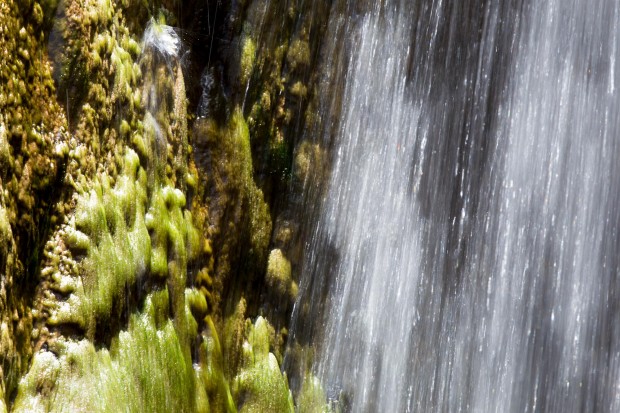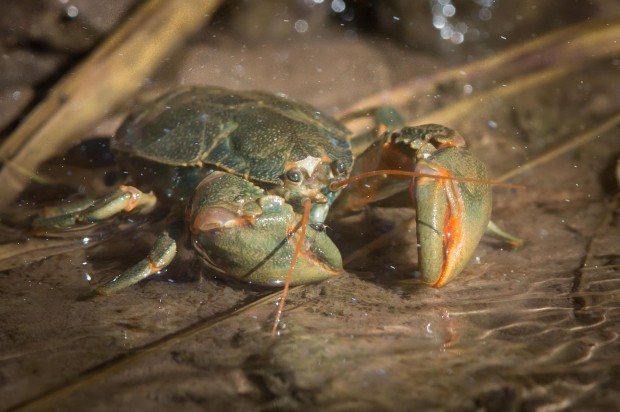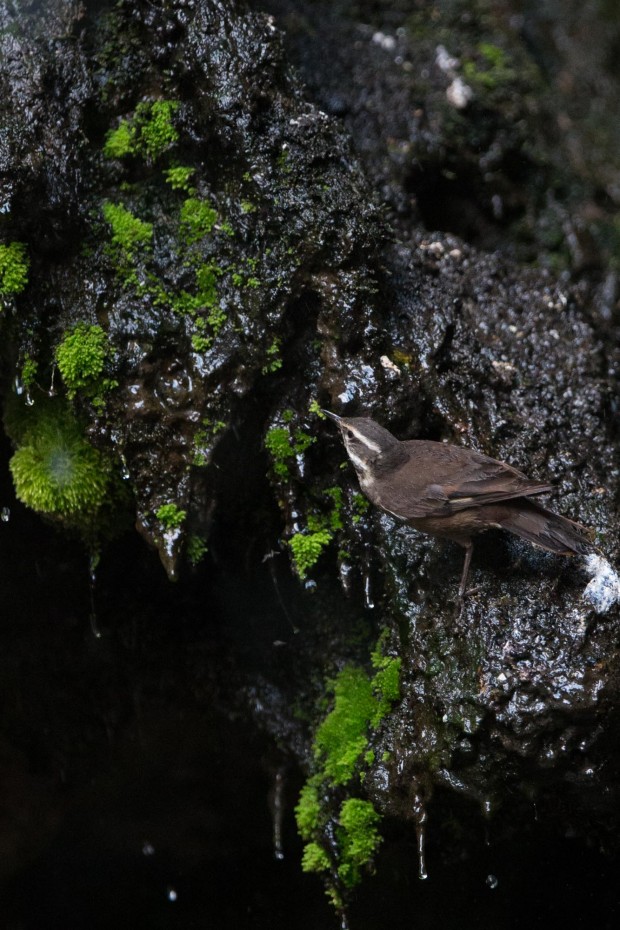In early December we found ourselves in the Andean foothills west of the city of Mendoza, Argentina, visiting a contact given us by Aves Argentinas, Andy Elias. Andy had for many years worked for the National Parks authority and was a renowned local naturalist. One evening he told us about a waterfall he had visited three years before where he had seen White-collared Swifts. He wondered if the waterfall would be dry. Would the Swifts still be present? Would we like to accompany him ? YES!
It was to be about a 1 to 2 hour walk up an isolated valley at approx 2,300 metres, so we started early, shortly after dawn. On the rock strewn hillside above us we could see bright white shapes, these were the lovely flowers of the Cacti ‘candicans’, its fragrant blooms normally open at night and remain open until early morning. The bright white petals and yellow centres attract night pollinators such as moths and bats.
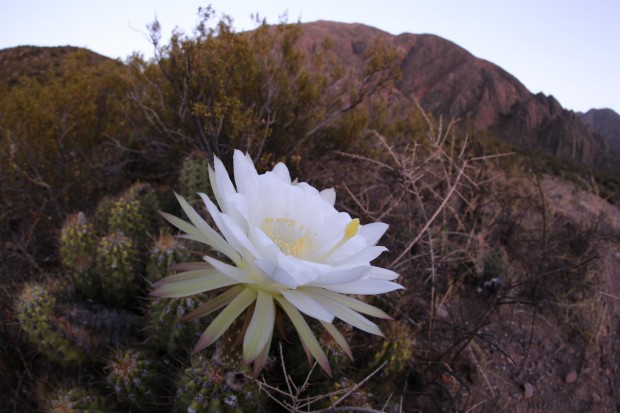
We continued to walk to the top of a ridge overlooking the valley we were to follow to the waterfall. The image below shows the valley, we followed the one on the left hand side. The valley to the right was the one where the celebrated General Don Jose de San Martin led 10,000 soldiers, the force that eventually defeated the Spanish and liberated Argentina.
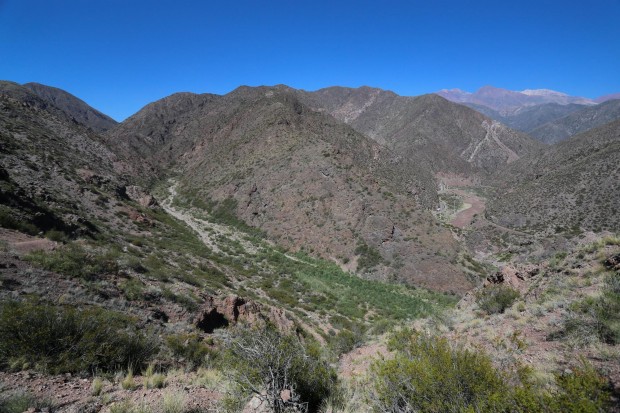
Being at such a height, the habitat was alto-andino, so fairly sparse of vegetation, mostly pampas grasses, Chilka and Altepe shrubs as well as many cacti.
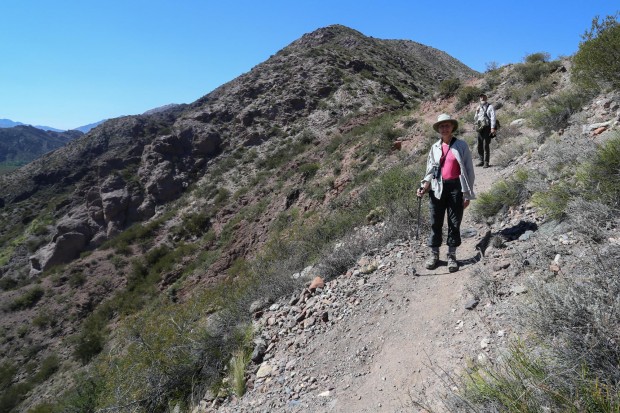
It was a long hot walk as we followed the stream up the valley, but there were many exciting birds along the way, Brown-capped Tit-Spinetails , White-winged Black Tyrants and White-winged Doves.
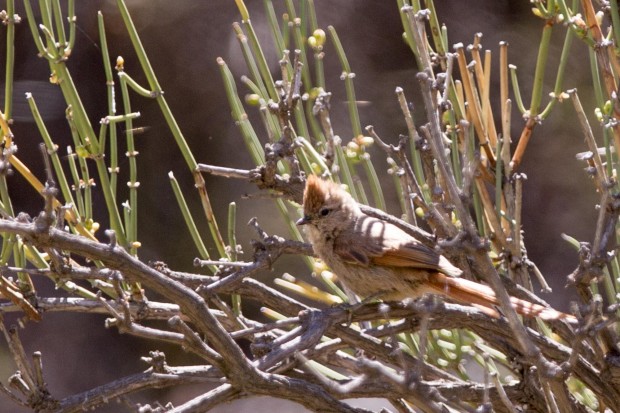
Brown-capped Tit Spinetail
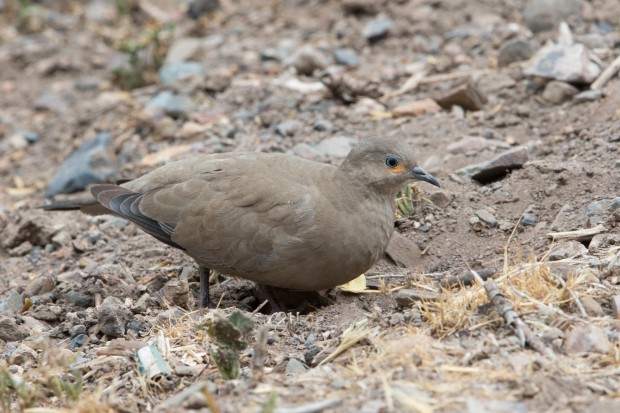
White-winged Dove
Arid lands such as this can seem barren and devoid of wildlife. The truth is that life abounds and is even more fascinating because of the amazing adaptations that enable survival. All the plants in this landscape had mechanisms to deal with the lack of rain and high temperatures, eg small leaves with waxy coatings to reduce water loss. Some have no leaves at all and photosynthesise by having bright green chlorophyll-laden stems or spines, the Berberis grevilleana for example has vicious spines and is locally named the crucero plant, due to its three sharp thorns.
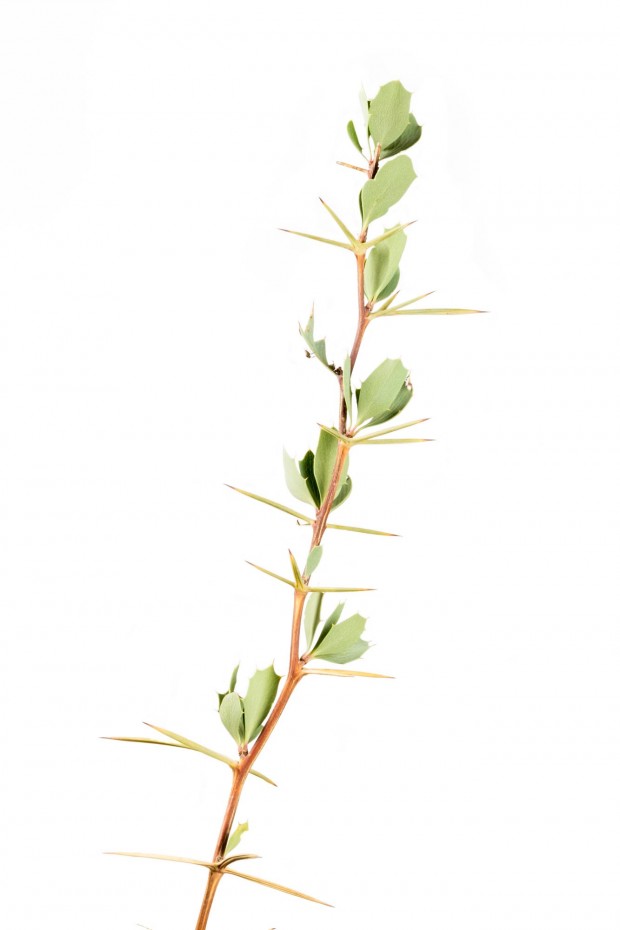
Berberis grevilleana
We found a rather special beetle bumbling over some pebbles. This little animal is beautifully adapted to face the harsh realities of this land. It has given up the power of flight and so its hard outer covering is fused together. Over this domed body a series of delicate channels and ridges can be seen. At night the insect curls up with its head pointing downwards to rest. During the night tiny droplets of moisture condense on the dome and this moisture flows down the intricate channels into its mouth. An everyday miracle of evolution and nature.
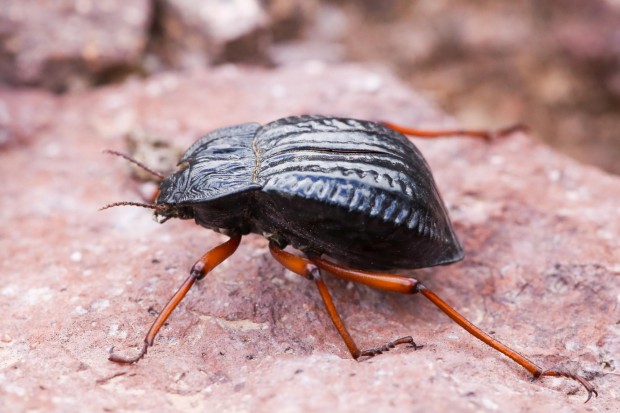
Tenebrionidae sp beetle
and a lizard, beautifully camouflaged and scurrying between crevices in the rocks.
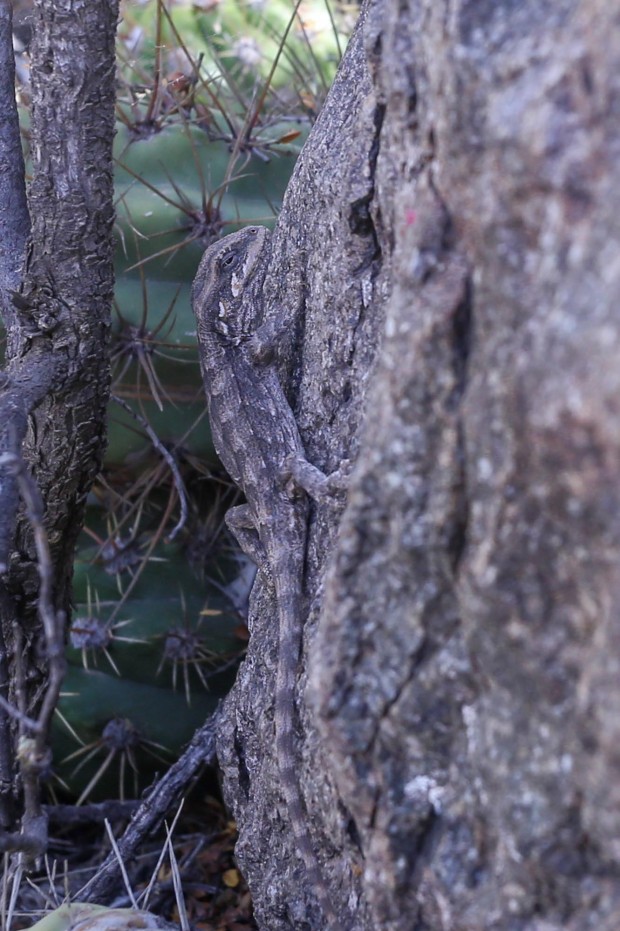
Diplolaemus lizard or Matuasto
Still following the valley stream, we found a rather special animal, a small freshwater Crab.
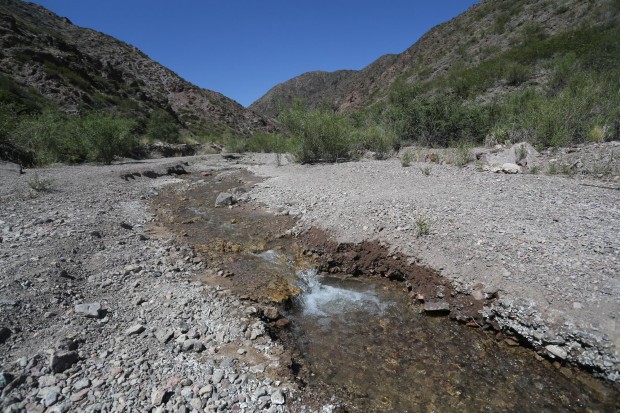
Freshwater crabs like this are endemic to Argentina and Chile. There are about 20 species altogether, each confined to its own isolated region. Genetic studies have found them all to be related and it is thought that over the millennia when glaciers covered the Andes, they speciated into the varieties to be found today.
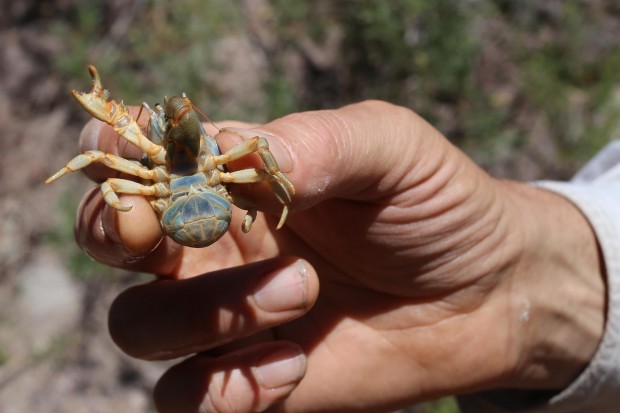
In the azure skies above us circled an occasional Condor but no sign of any Swifts.
On we walked towards the mythical waterfall……..
…..was the waterfall dry? did we find the swifts? See the next blog!

